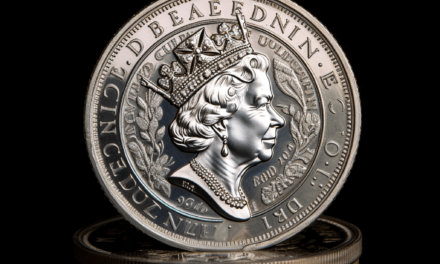If you’re a parent, grandparent, or just someone who wants to help a young person save for their future, it’s worth looking into Junior SIPPs.
In this article, we’ll break down everything you need to know, from how they work to their advantages and disadvantages. We’ll provide easy-to-understand explanations, perfect for those who are new to the world of finance.
- What is a junior SIPP?
- How do junior SIPPs work?
- How much can I pay into a junior SIPP?
- Do you get tax relief in a junior SIPP?
- What happens to a Junior SIPP at 18?
- What is the disadvantage of a junior SIPP?
- How risky are Junior SIPPs?
- Who can contribute to a Junior SIPP?
- What is the difference between Junior ISA and Junior SIPP?
- FAQs
What is a junior SIPP?
A Junior SIPP, or Self-Invested Personal Pension, is a type of pension scheme specifically designed for children under the age of 18.
It’s a long-term investment plan that allows you to contribute to a child’s retirement savings and benefit from tax relief.
In simpler terms, a Junior SIPP is a savings account for a child’s future, where the money is invested to potentially grow over time.
How do junior SIPPs work?
Junior SIPPs work similarly to regular SIPPs, which are pension accounts for adults.
You can invest in a range of assets, including stocks (shares in companies), bonds (loans to companies or governments), and funds (a collection of investments managed by a professional).
The money you contribute is tax-free, and any gains made within a Junior SIPP are also exempt from Capital Gains Tax (a tax on the profit made from selling an asset).
Here’s a Junior SIPP calculator that tells you how much tax-relief you’ll get on your contributions:
And here’s a table with some of the types of investments you can hold in a Junior SIPP:
| Investment Type | What is it? | Pros | Cons |
| Stocks and Shares | Ownership in individual companies | Potential for high returns, growth | Risk of losing money, market ups and downs |
| Funds | Collection of stocks, bonds, or other investments | Spreads risk, professional management | Fees, and performance depends on the fund manager |
| Investment Trusts | Closed-ended funds that invest in various assets | Spreads risk, potential for income/growth | Fees, and prices can be above or below asset value |
| ETFs and Index Funds | Funds that track a market index | Low fees, spreads risk, easy to buy/sell | Tied to overall market performance |
| Ready-made SIPP Portfolios | Pre-selected mix of investments for your SIPP | Easy to start, diversified, low effort | Less control, performance depends on selection |
| Managed SIPP Portfolios | Investments chosen by a professional manager | Expert management, tailored to your goals | Higher fees, depends on manager’s performance |
| Property | Real estate investments, e.g., commercial property | Spreads risk, potential income, inflation hedge | Less liquidity, tied to property market |
Junior SIPP rules
There are some key rules you need to be aware of when dealing with junior SIPPs:
- Opening an account:
Only a parent or legal guardian can open a junior SIPP on behalf of a child. This means that other relatives or friends cannot directly open the account, although they can still contribute to it. - Contribution limits:
Contributions are limited to £2,880 per tax year, but they benefit from 20% tax relief, effectively raising the maximum annual contribution to £3,600. This is the total limit for all contributions from all sources, including parents, grandparents, and other family members. - Access to funds:
Money cannot be withdrawn from a junior SIPP until the child reaches retirement age, currently set at 55 but going up to 57 in 2028.
How much can I pay into a junior SIPP?
You’re allowed to contribute up to £2,880 per tax year into a junior SIPP.
However, thanks to the 20% tax relief, this amount effectively increases to £3,600.
Tax relief is a government incentive to encourage people to save for their retirement. It’s essential to bear in mind that this is the total limit for all contributions from all sources, including parents, grandparents, and other family members.
Do you get tax relief in a junior SIPP?
Yes, you do!
Contributions to a junior SIPP are eligible for 20% tax relief, just like contributions to a regular SIPP.
This means that for every £80 you invest, the government will add an extra £20, up to the maximum annual contribution of £3,600.
Tax relief helps to make investing in a pension more attractive and affordable, providing an added incentive to save for the future.
What happens to a Junior SIPP at 18?
When a child turns 18, a junior SIPP doesn’t automatically change, but the child gains full control over the account.
This means they can decide how the money is invested and make additional contributions if they wish.
They can continue contributing to their SIPP, subject to the standard annual allowance for adults, which is currently £60,000 or 100% of their annual earnings, whichever is lower.
At this point, it’s essential for them to become educated about their pension and make informed decisions about their investments. They may choose to consult a financial adviser or take advantage of online resources to learn more about managing their pension effectively.
What is the disadvantage of a junior SIPP?
One key disadvantage of a junior SIPP is the lack of access to the funds until the child reaches retirement age, which is currently set at 55 and going up to 57 in 2028.
This means that the money can’t be used for other purposes, such as funding education or buying a first home.
Additionally, investing in a junior SIPP requires careful consideration of the potential risks involved, as the value of investments can go down as well as up.
It’s essential to understand that the performance of the investments is not guaranteed, and there is a possibility of losing money.
Another potential drawback is the responsibility placed on the account holder to make investment decisions. While this can be an opportunity to learn about finance and investing, it can also be daunting for those with limited experience.
Here’s a table with some advantages and disadvantages of Junior SIPPs:
| Advantages | Disadvantages |
|---|---|
| Tax relief on contributions | Lack of access to funds until retirement age (currently 55) |
| Potential for long-term investment growth | Risks associated with investing |
| Wide range of investment options | Responsibility for investment decisions |
| Helps build a nest egg for retirement | Annual contribution limits (£2,880 or £3,600 with tax relief) |
| Can be opened for a child at any age before 18 | May not be suitable for short-term financial goals |
| Contributions from multiple sources (parents, grandparents, etc.) | Requires coordination between contributors to avoid exceeding limits |
How risky are Junior SIPPs?
The risk level of a Junior SIPP depends on the assets you choose to invest in.
Generally speaking, investments with higher potential returns come with greater risk.
For example, stocks and shares tend to be more volatile than bonds, meaning their prices can change more dramatically in a short period.
It’s crucial to diversify your investments, which means spreading your money across different types of assets to help manage risk.
Diversification can reduce the overall risk of your portfolio by ensuring that you’re not overly reliant on the performance of a single investment.
Consulting with a financial adviser can help you make informed decisions based on your risk tolerance and the child’s long-term financial goals. They can provide guidance on selecting appropriate investments and help you develop a suitable investment strategy.
Who can contribute to a Junior SIPP?
Anyone can contribute to a junior SIPP, including parents, grandparents, and other family members or friends.
However, the total annual contributions from all sources must not exceed the £2,880 limit, which effectively increases to £3,600 with tax relief.
This means that if multiple people want to contribute, they need to coordinate their efforts to avoid exceeding the limit.
Gifts or contributions made by individuals other than the child’s parents or legal guardians should be made directly to the account, with the account holder’s permission.
In some cases, it may be necessary to provide the SIPP provider with a written confirmation of the contribution source.
What is the difference between Junior ISA and Junior SIPP?
A Junior ISA (Individual Savings Account) is another tax-efficient savings option for children. The main differences between a Junior ISA and a Junior SIPP are:
- Accessibility – Money saved in a Junior ISA becomes accessible to the child when they turn 18, while Junior SIPP funds can’t be accessed until retirement age (currently 55). This makes Junior ISAs more suitable for shorter-term financial goals, such as paying for university or a first home, while Junior SIPPs focus on long-term retirement savings.
- Contribution limits – The annual contribution limit for a Junior ISA is £9,000, while the limit for a Junior SIPP is £2,880 (£3,600 with tax relief). This means that you can save more each year in a Junior ISA compared to a Junior SIPP.
- Investment options – Both Junior ISAs and Junior SIPPs offer a range of investment options, but Junior SIPPs often provide a wider variety of assets to choose from. This can be an advantage for those who want more control over their investments and the opportunity to diversify their portfolio further.
FAQs
What is the best junior SIPP provider?
There’s no easy answer to this question, as the best provider for your child’s Junior SIPP depends on your specific needs and preferences. Factors to consider include the range of investment options, fees, customer service, and online platform usability.
It’s a good idea to compare different providers and read reviews to find the best fit for your situation.
Some well-known providers include Hargreaves Lansdown, AJ Bell Youinvest, and Fidelity.
Each provider has its own set of features, fees, and investment options, so take the time to research and choose the one that best aligns with your goals and preferences.
Can I start a pension for my child?
Yes, you can start a pension for your child by opening a Junior SIPP.
Doing so allows you to contribute to their retirement savings and helps them build a nest egg for their future.
Starting a pension early for your child allows more time for the investments to grow and benefit from compounding, which can significantly impact their future retirement savings.
Is a junior SIPP subject to inheritance tax?
If the child dies before accessing their Junior SIPP funds, the pension pot can be passed on to beneficiaries without being subject to inheritance tax.
However, specific rules may apply depending on the beneficiary’s relationship to the child, so it’s advisable to consult a financial adviser for more information.
What age should you open a SIPP?
You can open a Junior SIPP for a child at any age before they turn 18.
Starting a pension early for your child allows more time for the investments to grow and benefit from compounding, which can significantly impact their future retirement savings.
It’s important to remember that the earlier you start saving, the greater the potential for long-term growth.
Is a junior SIPP a good idea?
A Junior SIPP can be a great way to save for a child’s future, thanks to the tax relief and potential for long-term investment growth.
However, it’s essential to consider the lack of access to the funds until retirement age and the inherent risks involved in investing.
It’s worth weighing up the pros and cons and potentially exploring other savings options, such as Junior ISAs, before deciding if a Junior SIPP is the right choice for your child.




